How to Play YouTube on Your TV Using iPhone

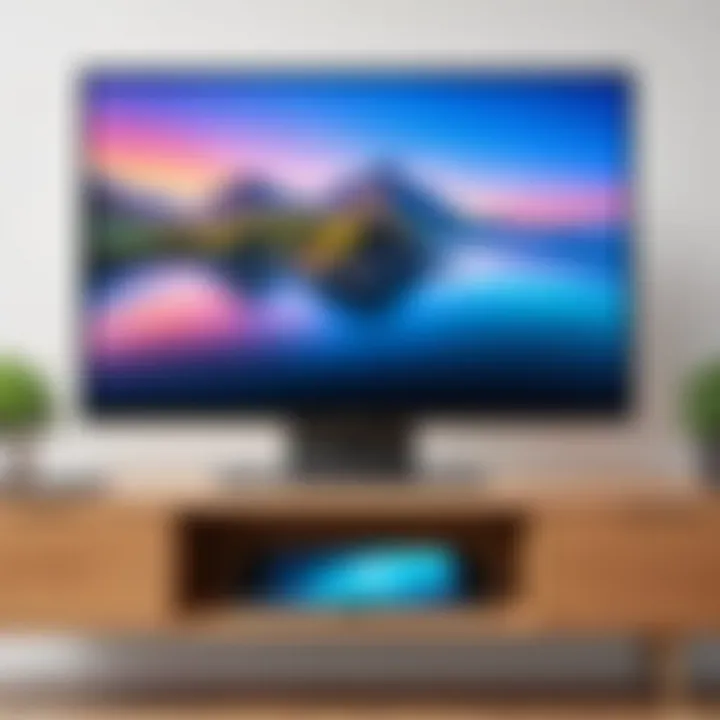
Intro
With the rise of streaming services, viewing content on larger screens has become a common practice. YouTube, being one of the largest platforms for video content, offers numerous methods to play videos on a television using an iPhone. Understanding how to connect your iPhone to your TV for a seamless viewing experience enriches one’s entertainment options. This guide aims to discuss the various methods, device compatibility, and troubleshooting tips in relation to playing YouTube on a TV from an iPhone.
Overview of the Technology
Streaming media from an iPhone to a TV involves various methodologies and technologies that facilitate this interaction. Depending on the available devices, different options allow for a blend of convenience and effectiveness.
Key Specifications
Streaming using an iPhone typically involves Wi-Fi connections for seamless data transfer. AirPlay technology, available on iPhones, is one of the most direct methods utilized alongside casting to smart TVs that have built-in support for YouTube. Depending on your television, you may also have options like HDMI cables or other adapters.
Unique Selling Points
The primary appeal of streaming from an iPhone to a TV includes:
- User-Friendly Interface: iPhones have an intuitive interface that simplifies the streaming process.
- Quality of Content: High-definition videos can play without significant loss of quality due to the robust Wi-Fi standards.
- Versatile Options: Various methods cater to a range of devices, ensuring broader compatibility.
Design and Build Quality
When considering the tools and accessories needed for streaming, the design and build quality of the devices play a role in overall user experience.
Material Used
Apple products are known for their sturdy construction and premium materials. iPhones, crafted from glass and aluminum, can withstand regular use while maintaining aesthetic appeal. If connected to adapters or devices, such as HDMI cables, ensure they are robust enough for daily handling to avoid wear.
Ergonomics and Usability
The design of iPhones fosters comfort during operation. The seamless user interface allows users to navigate through applications quickly. Streaming options can be accessed with minimal steps, making it efficient for anyone, regardless of tech savviness.
"Apple's focus on usability provides a significant advantage when pairing devices for content sharing."
The overall synergy between an iPhone and modern televisions creates an appealing multimedia experience, making it even easier for consumers to enjoy their favorite YouTube videos on larger screens.
Prologue to Streaming YouTube from iPhone to TV
In an era dominated by digital content, the ability to stream videos from portable devices to larger screens has become increasingly vital. This particular section focuses on the methods and significance of streaming YouTube from your iPhone directly to your TV. The shift from small screens to bigger displays enhances the viewing experience, fostering a more engaging interaction with content like videos, movies, or educational material.
Streaming YouTube on a TV provides numerous advantages. First, it significantly improves viewing comfort. Whether sharing a funny clip with friends or enjoying an informative documentary with family, a larger screen presents more detailed images and reduces eye strain compared to viewing on an iPhone. Second, the social aspect of sharing experiences becomes richer, as multiple viewers can engage at once, making it ideal for gatherings or informal meetups.
Considerations around streaming involve both technical and user preferences. Each method of connection—be it wireless through AirPlay or wired via HDMI—offers unique benefits. Understanding these methods allows users to choose the best fit for their setup. Some users may prefer wireless streaming for the ease of setup, while others might opt for a wired connection for a stable and uninterrupted experience.
This guide aims to equip readers with detailed knowledge on these various methods, ensuring that both tech enthusiasts and everyday users can effortlessly connect their iPhones to their TVs for streaming purposes. It emphasizes the importance of user-friendly processes, device compatibility, and troubleshooting steps throughout the narrative.
"Streaming is not just about watching; it is about enhancing the experience of how we interact with digital content."
Ultimately, as technology evolves, so do the possibilities for seamless media consumption. Learning to stream YouTube from your iPhone to a TV not only elevates your content viewings but also adapts to future innovations in streaming technology.
Understanding the Basics of Streaming
Streaming has become an essential aspect of how we consume content today, particularly for platforms like YouTube. Understanding streaming is crucial for anyone looking to play videos on a larger screen. This section focuses on key elements of streaming that help users make informed decisions when using an iPhone to connect to a TV.
With the various methods available, knowing the fundamentals can enhance the viewing experience. Understanding the technology that underpins streaming will inform users about potential issues, equipment choices, and how to achieve optimal performance.
Definition of Streaming
Streaming refers to the process of transmitting data continuously over the internet. This allows users to access content in real-time rather than downloading entire files. The primary benefit of streaming is convenience. Users can start watching videos almost instantly without waiting for a download to complete.
In contrast to traditional media consumption methods, streaming eliminates the need for physical media, such as DVDs or Blu-rays. This shift has made it easier for people to access a wide variety of content from anywhere, making it a popular choice among tech-savvy individuals.
How Streaming Works
Streaming works through a sequence of data packets sent from a streaming server to the user's device, such as an iPhone. Here are the basic steps involved in the streaming process:
- Content Delivery: When you select a video to watch, a request is sent to the streaming server.
- Data Transmission: The server begins to deliver chunks of data. These segments are transmitted over the internet, often using protocols that ensure efficient delivery.
- Buffering: As data arrives, your device buffers a small portion of it to provide a smooth playback experience. Buffering helps compensate for any interruptions or slow internet connections.
- Playback: Once enough data is buffered, the video begins to play. The process continues in the background, downloading additional segments while you watch.
Notably, streaming quality can vary based on your internet speed, device capabilities, and the chosen resolution. If the connection fluctuates, this can impact video quality, leading to disruptions or reduced clarity. Therefore, understanding the dynamics of streaming can help users make choices that enhance their viewing experience.
Necessary Equipment for Streaming
Streaming YouTube from an iPhone to a TV requires certain equipment to ensure an successful and smooth experience. Understanding the necessary equipment can significantly affect the quality of your viewing, and it can also determine the ease of connecting your devices. In this section, we identify the key components that are integral for streaming and the advantages they bring to the user experience.
Smart TVs and Compatibility
Smart TVs have become essential for a contemporary streaming experience. These devices frequently come with built-in apps such as YouTube, allowing direct access without needing extra hardware. However, not all Smart TVs are created equally. Some require additional setup while others offer seamless compatibility with iPhones through features like AirPlay.
When choosing a Smart TV for streaming purposes, it is crucial to check compatibility with iOS devices. Look for models that support AirPlay 2, as this technology allows for wireless streaming from your iPhone, enhancing the experience.
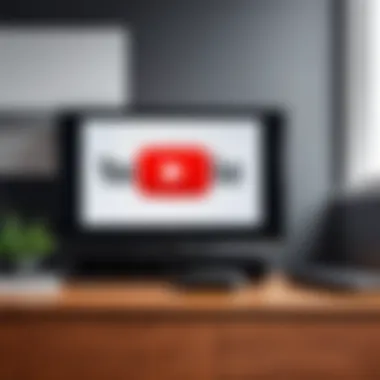
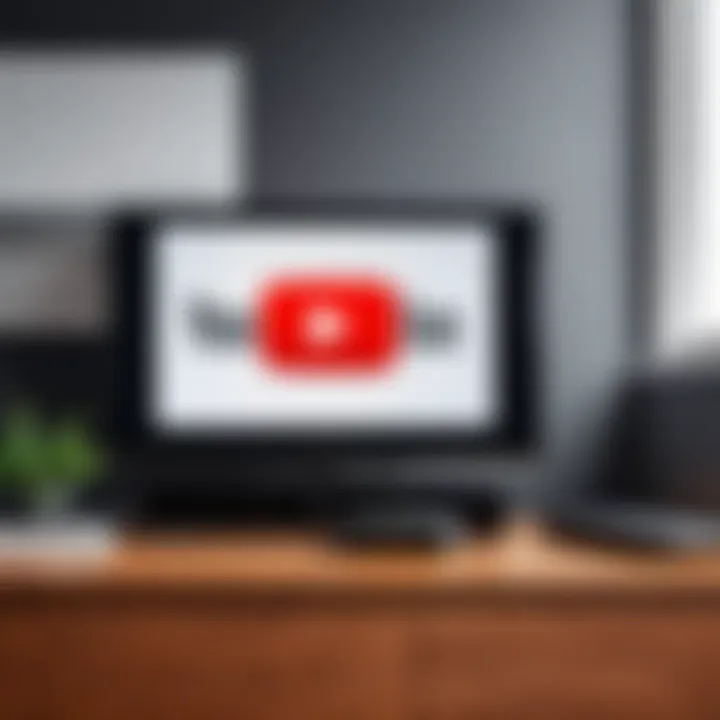
Key Factors to Consider:
- Operating System: Ensure the Smart TV's operating system is up-to-date to support new streaming technologies.
- Wi-Fi Connectivity: A stable Wi-Fi connection ensures that streaming is smooth and reduces buffering issues.
- Resolution Quality: Higher resolution (4K, for example) can enhance video quality significantly.
Required Cables and Adapters
While wireless solutions are often prioritized, sometimes a wired connection is more reliable. Using HDMI cables and adapters can result in better performance, especially in areas with poor Wi-Fi signals.
To connect your iPhone to a TV directly, you need to identify the correct HDMI adapter that fits your iPhone's model. The Apple Lightning Digital AV Adapter is a popular choice, as it allows for 1080p video output and also has a port for charging your device simultaneously.
Steps to Consider:
- Check iPhone Model: Ensure that the adapter you choose is compatible with your specific iPhone model.
- Choose Quality Cables: Select HDMI cables that support high definition to guarantee the best video output.
- Connectivity Options: Some TVs have multiple HDMI ports. Ensure to connect to the correct one and select the relevant input source on your TV.
Connecting iPhone to TV via AirPlay
Connecting your iPhone to a TV using AirPlay offers several advantages that enhance your overall viewing experience. AirPlay enables seamless streaming, allowing you to project content from your device onto a larger screen without the hassles of wired connections. This wireless technology supports high-quality video and audio, making it an appealing option for iPhone users.
One key benefit of using AirPlay is its simplicity. Once set up, it allows you to stream YouTube videos or any other content with just a few taps. Additionally, you don't need to worry about cumbersome cables or adapters, making your space less cluttered. However, it is important to remember that both your iPhone and the TV must be connected to the same Wi-Fi network for this to work effectively.
Setting Up AirPlay on Your Devices
The initial step in leveraging AirPlay involves proper setup on both your iPhone and your TV. Many modern smart TVs come with built-in AirPlay support. If your TV supports AirPlay, the process is straightforward. Start by ensuring that your TV is powered on and connected to the same Wi-Fi network as your iPhone.
On your iPhone, navigate to the Settings app, scroll down, and select the "AirPlay" option to enable it. Ensure that AirPlay is turned on. Also, adjust the security settings if needed, as you may want to restrict access. For older models of TVs, you might need an Apple TV device to use AirPlay effectively.
Using AirPlay to Stream YouTube Videos
After setting up AirPlay, streaming YouTube videos becomes a simple and intuitive process. First, launch the YouTube app on your iPhone. Choose the video you want to watch. Next, tap the AirPlay icon, which resembles a rectangle with a triangle pointing upwards at the bottom.
Upon tapping this icon, you will see a list of available devices. Select your TV from this list to initiate the connection. The video should start playing on your TV screen almost instantly. If you encounter any delay or connection issues, verify your Wi-Fi network settings or reboot your devices if necessary.
In summary, AirPlay provides a flexible, efficient way to enjoy YouTube videos on the bigger screen of your TV. Its advantages lie in its ease of use and minimal setup requirements, making it a preferred choice for many iPhone users.
Using HDMI Cables for Direct Connection
Using HDMI cables for direct connection allows for a straightforward and reliable way to stream YouTube videos from your iPhone to your TV. This method is especially beneficial for individuals who may not want to navigate the potential complexities of wireless solutions like AirPlay or Chromecast. The clarity of the connection lies in the fact that HDMI cables transmit both audio and video signals in high definition.
When utilizing HDMI, users can expect minimal latency and clear quality without the interference that can sometimes affect wireless connections. Given that streaming devices can sometimes experience connection drops or buffering issues, a direct HDMI connection circumvents these potential pitfalls. Therefore, it becomes crucial to understand how to effectively set up this physical connection.
Finding the Right HDMI Adapter
Choosing the correct HDMI adapter is foundational when connecting an iPhone to a TV. Not all iPhones use the same connector type, so identifying the right adapter according to your iPhone model is essential. For instance, if you own an iPhone 12 or newer, you will likely use a Lightning to HDMI adapter, as these models use the Lightning connector.
Apple’s Lightning Digital AV Adapter serves as a popular choice, providing a seamless connection to most HDMI-equipped TVs. This adapter allows you to mirror your iPhone screen on the larger TV screen with ease. Ensure that any third-party adapters are also compatible with your specific model, as not all adapters guarantee functionality with all devices.
Connecting with HDMI: A Step-by-Step Guide
Connecting your iPhone to a TV via HDMI is a simple process. Follow these steps to achieve a successful connection:
- Purchase the appropriate HDMI adapter for your iPhone model.
- Connect the HDMI adapter to your iPhone’s lightning port.
- Take an HDMI cable and insert one end into the adapter previously connected to your iPhone.
- Insert the other end of the HDMI cable into an available HDMI port on your TV.
- Turn on your TV and select the corresponding HDMI input using the remote control or the TV’s buttons. This may vary depending on your TV brand.
- Unlock your iPhone and swipe to the desired content. You should now see your iPhone screen mirrored on your TV.
Direct connection using HDMI provides a reliable alternative to streaming methods, ensuring stable performance and excellent quality.
Utilizing HDMI for direct connection is a solid choice for those who prioritize quality and stability when streaming YouTube content. Ensuring you have the right equipment and following the setup steps is key to a successful viewing experience.
Exploring Additional Streaming Devices
In today's digital age, streaming content from personal devices to larger screens is a fundamental part of the viewing experience. Exploring additional streaming devices is essential because it gives users varied options to choose from, ensuring they can find a solution that meets their needs. These devices often come with unique features that enhance the viewing experience, support different applications, and provide seamless integration with other technologies.
When considering additional streaming devices, several aspects should be examined. The ease of setup, compatibility with existing devices, and the overall user interface play significant roles in the decision-making process. Furthermore, using dedicated streaming devices can sometimes yield improved performance and quality compared to mobile-to-TV methods that rely solely on conventional connections.
Using Chromecast
Chromecast, developed by Google, enables users to stream content directly from their mobile devices to their TVs. Its functionality revolves around the concept of "casting," which allows users to mirror or cast their screens, including apps like YouTube.
A key benefit of Chromecast is its simplicity and versatility. Once the device is connected to the TV’s HDMI port and the home Wi-Fi network, streaming can be initiated with just a few taps from the iPhone. The setup is straightforward, involving the Google Home app. Users have to ensure their iPhone is on the same network as the Chromecast device.
Consider the following advantages of using Chromecast:
- Wide App Support: Many applications, including YouTube, Netflix, and Spotify, support Chromecast natively.
- Control with iPhone: Users can continue to use their iPhone for other tasks while streaming.
- Affordable: Chromecast devices are relatively inexpensive, offering a budget-friendly solution.
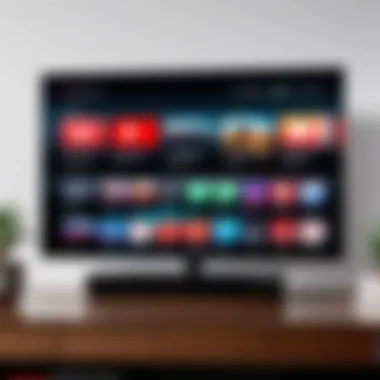
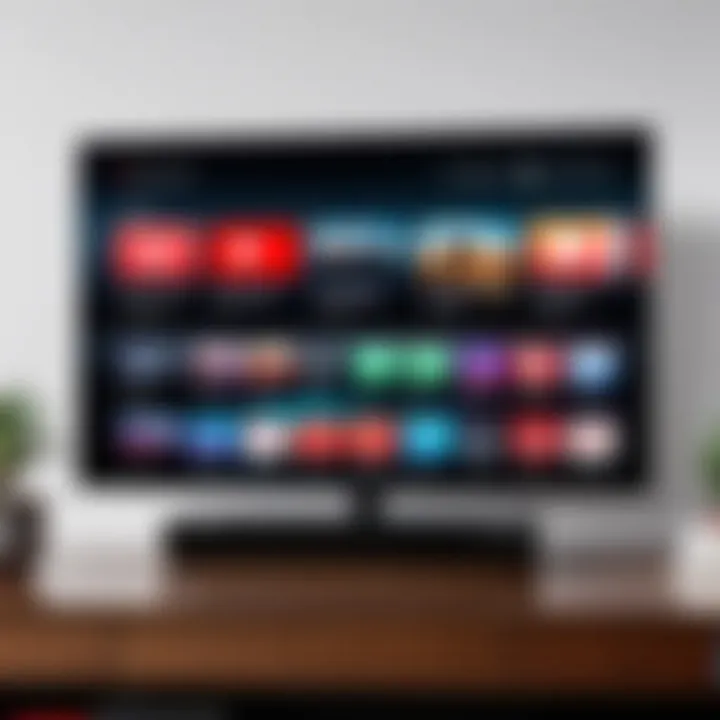
However, be mindful. The reliance on Wi-Fi means that poor network conditions can lead to buffering or connection issues.
Utilizing Amazon Fire Stick
The Amazon Fire Stick is another prominent streaming device that transforms standard televisions into smart TVs. Similar to Chromecast, it requires an HDMI port and is straightforward to set up.
What sets Amazon Fire Stick apart is its native interface, which includes access to various streaming services along with the Amazon ecosystem. Users can easily download the YouTube app directly onto the device, allowing for seamless streaming.
Here are some critical aspects of the Amazon Fire Stick:
- Voice Control: Integration with Alexa enables voice commands for easy navigation and control.
- Dedicated Streaming Platform: It offers a dedicated interface for managing content from multiple services in one place.
- Regular Updates: Users receive regular updates, ensuring access to the latest features and compatibility improvements.
Choose wisely based on your preferences and needs. Both Chromecast and Amazon Fire Stick are powerful, each with its strengths that cater to different viewing habits.
Troubleshooting Common Issues
When streamin YouTube from your iPhone to a television, issues may arise that can disrupt your experience. Troubleshooting common issues is vital to ensure seamless connectivity and high-quality playback. Identifying problems early can lead to quick resolutions, allowing viewers to fully enjoy their content without much delay. Addressing these concerns prevents frustration and enhances overall satisfaction with the streaming process.
Connectivity Problems
One of the primary issues that users encounter when attempting to stream YouTube videos is connectivity problems. These can range from intermittent connection drops to complete failure to connect at all.
First, ensure that both your iPhone and TV are on the same Wi-Fi network. This is a crucial step that many overlook. If there is a mismatch in networks, AirPlay or other methods will not function correctly.
If you are using an HDMI cable, check the connections. Ensure that the cable is properly connected to both the iPhone adapter and the TV’s HDMI port.
Another common issue involves network congestion. if other devices are using significant bandwidth, it might impact streaming quality. Consider disconnecting devices that are not in use or upgrading your network plan for better performance. To troubleshoot connectivity problems:
- Restart your iPhone and TV.
- Switch off Wi-Fi and turn it back on to refresh the connection.
- Examine router settings to optimize performance.
Quality and Performance Concerns
Quality and performance are central to a satisfying viewing experience. Resolution issues, lagging, or buffering during playback can lead to disappointment. Start by checking the video quality settings in the YouTube app. Higher resolutions require more bandwidth, which can strain your connection.
If you notice buffering:
- Try lowering the video resolution temporarily.
- Test your internet speed using an online speed test tool. A download speed of at least 5 Mbps is recommended for smooth streaming.
- Check if your internet provider has any downtime or maintenance work in progress.
If performance issues persist, try updating your iPhone's software or the YouTube app. Sometimes, software bugs can interfere with streaming capabilities.
In cases where you continue to experience problems, consider reaching out to technical support for further assistance. Utilizing forums such as Reddit can also provide insights as many users often share experiences and solutions.
Optimizing Your Viewing Experience
Optimizing your viewing experience is essential when streaming YouTube from your iPhone to your TV. This section will emphasize the importance of specific audio and video settings that can significantly impact the overall quality of content you consume. A good setup improves enjoyment and reduces frustration when watching videos. Many users overlook these aspects, thinking that simply connecting devices is enough. However, attention to these details can transform your streaming experience from mediocre to outstanding.
Adjusting Video Settings
Video quality can vary greatly depending on several factors. First, ensure your iPhone app is updated with the latest version of YouTube. Higher resolutions, like 1080p or even 4K, offer sharper and clearer images. To adjust video settings, you can do the following:
- Open the YouTube app on your iPhone.
- Play your chosen video.
- Tap on the video to reveal options.
- Select the three dots in the upper-right corner.
- Choose 'Quality' from the menu.
- Opt for the desired resolution, pinning attention to how your internet connection can support a high-quality stream without buffering.
Streaming in higher quality can consume more data, so consider your data plan or Wi-Fi connection's capability. Switching off autoplay and lowering quality during a slow connection may enhance your experience. Adjusting the settings accordingly ensures you maximize the visual fidelity of the content.
Enhancing Audio Settings
Audio quality is as crucial as video quality; optimizing it can create an immersive experience. YouTube allows users to adjust specific audio settings that can enhance clarity and depth. Here are steps to enhance audio while streaming to your TV:
- Check the TV’s audio settings.
- For TVs with advanced audio settings, consider enabling features like "Surround Sound" or adjusting bass and treble levels.
- Ensure your iPhone is set to output high-quality audio. This can be done in the settings by navigating to "Sounds & Haptics," ensuring volume levels are sufficient.
- If using external speakers or soundbars, connect them properly and consult their manuals for optimal settings.
With the right audio setup, watch videos come to life. Clear dialogues and rich background music can make a significant difference.
"Enhancing both video and audio settings creates a holistic streaming experience that keeps you engaged and satisfied."
Comparing Streaming Methods
When it comes to streaming YouTube from an iPhone to a television, understanding the various methods available is crucial for optimizing your viewing experience. This section will analyze different streaming approaches, namely AirPlay, HDMI, and third-party devices, and their relative strengths and drawbacks. By grasping these elements, users can make informed choices that align with their preferences and technological environments.
AirPlay vs. HDMI
AirPlay and HDMI are two prevalent methods for streaming content from an iPhone to a TV. Each has unique characteristics influencing user experience.
AirPlay offers a wireless solution, allowing seamless integration of iPhones with compatible smart TVs or Apple TV units. Its primary benefits include:
- Convenience: Users can control playback from anywhere in the room.
- Multi-tasking: Users can continue utilizing their iPhones for other tasks while streaming.
- Screen Mirroring: In addition to YouTube, it allows mirroring of all iPhone activities.


However, there are limitations to consider:
- Wi-Fi Dependency: A stable Wi-Fi connection is essential for smooth playback.
- Compatibility: Not all TVs support AirPlay, potentially requiring additional hardware.
On the other hand, HDMI provides a reliable wired connection. It is well-suited for users who prioritize quality and stability. Its advantages include:
- Consistency: A direct connection minimizes buffering and latency issues.
- Quality: Supports high-definition video and audio output.
- Compatibility: Most TVs come with HDMI ports, making it universally applicable.
Yet, there are drawbacks:
- Limited Mobility: Users must remain close to the TV due to the cable's length.
- Setup Complexity: Involves connecting various cables and adapters, which could be a hassle for some users.
Evaluating both methods emphasizes the importance of individual preferences. For those valuing convenience and mobility, AirPlay is a strong choice. Conversely, users focusing on performance and quality may prefer HDMI.
Third-party Devices vs. Native Solutions
Streaming methodologies can also be classified into third-party devices and native solutions. Understanding their differences can facilitate better decision-making based on one's setup.
Third-party devices such as Chromecast or Amazon Fire Stick offer additional functionalities beyond native capabilities. The advantages include:
- Versatility: Supports various streaming platforms and not just YouTube.
- Enhancements: Often, these devices come with added features like voice control or app integration.
- User-Friendly: Generally designed to simplify the streaming experience with intuitive interfaces.
These benefits come with considerations:
- Price: Some third-party devices may incur extra costs.
- Space: Users need to factor in space for the devices alongside existing setups.
In contrast, native solutions such as built-in apps on smart TVs or using AirPlay do not require additional hardware and might be more economical. Key benefits include:
- Cost-Efficiency: No need to purchase extra devices.
- Simplicity: Straightforward setup without cables or configurations.
However, there are limitations:
- Functionality: May lack some advanced features present in third-party solutions.
- Updates: Native app performance is often reliant on the TV manufacturer for updates and improvements.
Choosing between third-party devices and native solutions necessitates weighing costs, functionality, and the overall user experience.
Ultimately, a comprehensive understanding of these streaming methods allows users to select options that best meet their needs, ensuring an optimal viewing experience when streaming YouTube from an iPhone to a TV.
The Future of Streaming Technology
The realm of streaming technology is on a continuous path of evolution. With the rapid pace of digital innovation, it plays a crucial role in how content is consumed today. Streaming technologies not only enhance the user experience but also adapt to the changing expectations of consumers. Understanding the future directions of this field helps users and developers alike to stay ahead of trends and expectations.
Benefits of staying informed about the future of streaming include improved decision-making regarding equipment and services. As hardware and software develop, understanding emerging trends can lead to better choices that enhance viewing experiences.
Emerging Trends
Currently, several trends are shaping the future of streaming technologies. One notable trend is the rise of 4K and 8K streaming capabilities. With increasing internet speeds and availability of high-definition TVs, more content providers are offering ultra-high-definition streaming. This escalation means a greater demand for devices capable of supporting these formats.
Another trend to observe is the shift towards cloud gaming. Services like Google Stadia and NVIDIA GeForce Now allow users to stream video games directly to their devices without needing high-end hardware. This transition demonstrates how streaming is not limited to videos, expanding into interactive entertainment as well.
Additionally, the presence of artificial intelligence in streaming services is growing. AI technology can analyze user preferences and suggest content accordingly. This personalized approach can lead to a more engaging viewer experience, ensuring users find content that aligns with their interests.
Potential Innovations
The potential for innovation in streaming technology is vast. One significant area of development is the introduction of 5G networks, which promise faster data transmission speeds. With 5G, streaming quality can see substantial enhancement, opening opportunities for seamless viewing experiences across various devices.
Furthermore, innovations in streaming protocols are likely to emerge. Adaptive bitrate streaming, for instance, is a technique that dynamically adjusts the video quality based on the user's internet connection. This ensures a smoother performance without buffering, which is essential for retaining user engagement.
Another area worth noting is the growing importance of cross-platform compatibility. As consumers use a variety of devices—from smart TVs to smartphones—streaming technologies will increasingly focus on providing a cohesive experience. This aspect is pertinent for developers creating apps that aim to function across multiple ecosystems including Apple’s iOS and Google’s Android systems.
"The continued evolution of streaming technology highlights the importance of adaptability in an ever-changing digital landscape."
In summary, the future of streaming technology appears promising with trends pointing toward enhanced quality, user-centric features, and increased compatibility across platforms.
Ending
In this article, we explored the various methods to stream YouTube from an iPhone to a television. Understanding how to connect your devices effectively can greatly enhance your viewing experience. There are several methods available, each with its own benefits and considerations.
A key element discussed includes the technologies involved, such as AirPlay, HDMI connections, and streaming devices like Chromecast and Amazon Fire Stick. Each method offers distinct advantages based on user preferences, available equipment, and specific needs. For instance, AirPlay offers a seamless connection for Apple users, while HDMI provides a reliable direct link that can support higher resolutions.
When choosing the right method, consider factors such as ease of setup, video quality, and latency. Users may prefer a method that is straightforward and efficient for regular use. Additionally, troubleshooting tips presented in the article help address common issues such as connectivity and performance problems. By being prepared to fix these potential hurdles, the viewing experience can be consistently enjoyable.
The importance of optimizing both video and audio settings cannot be understated. Proper adjustments can lead to a more immersive experience, making the content more enjoyable. In the rapidly evolving landscape of streaming technology, staying informed about emerging trends and potential innovations is crucial.
Ultimately, streaming YouTube from an iPhone to a TV offers flexibility and convenience in accessing rich content on a larger screen. Mastering these techniques not only enhances personal entertainment but also allows sharing engaging video content with friends and family.
"The way we consume media has transformed significantly, and the use of mobile devices to stream content on larger screens is increasingly common."







